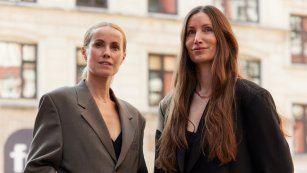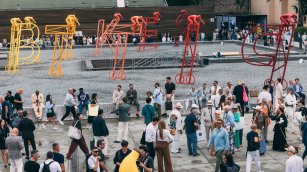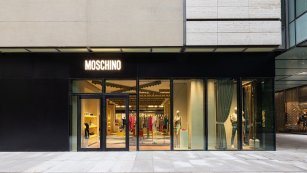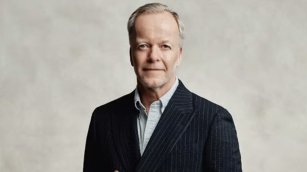Denmark’s Ciff Evolves Into Global Hub, Emphasizing Partnerships and Sustainable Fashion
The show rises in August as a hybrid platform: 200 brands, Nordic talent, the giant Bestseller in immersive mode and a new Fashion Commerce Summit. Director Sofie Dolva details her plan for the trade show business.

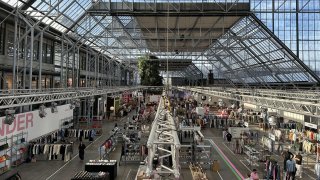
Ciff wants August to be more than just the return of fashion fairs. The event aims to demonstrate that a show can act as a cultural platform, commercial laboratory and radar for Nordic and international talent. “It’s not just about placing orders, it’s about creating branding and community moments,“ Sofie Dolva, director of the Danish fair, sums up to Modaes. From August 5 to 7, the Bella Center in Copenhagen will host two hundred companies, a new Fashion Commerce Summit and a total reconfiguration of the venue designed to allow visitors to navigate through aesthetic universes and not product aisles.
“Our goal is to make Ciff the most relevant, inspiring and efficient platform in Northern Europe,“ says Dolva. That plan includes digital shopping tools, guided tours for womenswear and signage that combines QR directories with maps by style affinity. All under the logic of a Copenhagen that, in the words of the executive, “balances business and inspiration in a very Scandinavian way”.
The 65th edition will again overlap with Copenhagen Fashion Week, but this year the synergy takes a qualitative leap. Ciff becomes a patron of Cphfw NewTalent and provides permanent showrooms for emerging designers. “It’s a real bridge between cultural visibility and commercial opportunity,“ insists Dolva. The Nordic debutants will be joined by strong returns such as Diesel and G-Star and the third consecutive presence of Bestseller, which will turn Hall C into an immersive hub for Pieces, Noisy May, JJXX, Object, Rouge Edit and Y.A.S.
“Ciff is the only European fair we invest in on this scale, it demonstrates our commitment to the Scandinavian scene,“ stresses Lars Pedersen, regional director and member of Bestseller’s executive committee.
Ciff will hold its next edition in Copenhagen from August 5-7
When Dolva made her debut as director in August 2022, coming from tech beauty startup Luluab and after five years at L’Oréal, she found a fragmented landscape. At the time, the Ciff and Revolver shows were competing for the same audience at two separate venues in the capital. The solution came in January 2023, when Ciff acquired Revolver and unified both projects under one umbrella.
“We had to move from oversupply to conscious curation,“ recalls the manager. The evolution of the appointment has consisted of the launch of the Ciff Media space, the digitization of the directory and the implementation of thematic routes for buyers.
The second major focus was to strengthen international partnerships. “Collaborating multiplies the visibility of our brands, Pitti Uomo is the proof,“ Dolva maintains. In fact, the Scandinavian Manifesto returned to Florence last June with eleven brands, two networking events and a clear message. “Placing Nordic design in the Fortezza da Basso shows that our aesthetic resonates globally,“ says the director. A similar flow is developing with the Cfda in New York and with the German Fashion Council.
Inside, the most visible change will be the new map of the Bella Center. Sixty-eight percent of exhibitors will propose a womenswear offer that will share an area with the Cphfw NewTalent showroom and with a niche beauty space, launched several seasons ago, “consistent with creative fashion”.consistent with creative fashion”; menswear, 20% of the total, will have specific installations exploring the wave of fluid tailoring and genderless streetwear. Lifestyle and outdoor will make up the remaining 12%, reflecting the mix that already dominates Nordic closets.
Scandinavian fair concentrates on building brand narratives
The Fashion Commerce Summit will be the highlight of the content agenda. Co-produced with agency Not Selling Liquid and with Shopify and Klaviyo as partners, it will address the integration of physical stores and digital channels. “Omni-channel is no longer enough, we are talking about unified commerce, a single source of data and a single experience,“ they explain from Shopify. Dolva adds, “Many exhibitors use Ciff to launch narratives, not just collections, so the Summit will give them actionable frameworks and return metrics.“
Talks will include a case from Fabienne Chapot on how to scale into direct-to-consumer without abandoning wholesale, and a panel on measuring Roi at physical trade shows. “Ciff is no longer a wholesale marketplace, it’s a hybrid accelerator,“ insists the director. Thus, the show will offer digital activations to brands, from videos on networks to QR codes on the stand, and post-event engagement reports.
But the business doesn’t live by tools alone. “For us, the in-person experience is still key; creativity is best felt off-screen,“ Pedersen says. Its Hall C will be its own ecosystem, with capsule fashion shows, upcycling workshops and a data lounge where buyers will be able to consult trends in real time.
The environmental filter will continue to be a differentiating feature in the fair’s selection. “Sustainability is no longer a feature, it is a condition of entry,“ sums up Dolva. Some 25% of the participating brands meet criteria of transparency, ethical chain and material innovation. “We value progression, we don’t ask for perfection, but we do ask for honesty and metrics,“ he clarifies. Panels on circularity and biomaterials labs will support that narrative. “The focus is no longer just on recycled fabric, but on the business model and who takes responsibility for end-of-life,“ the director explains.
Sustainability, from requirement to selection factor
Although the Nordic DNA continues to be the main pole of attraction, the fair detects clear growth from southern and eastern Europe and a rise in visitors from Korea and Japan. “France, the United Kingdom and Germany maintain their weight, but the new dynamism comes from emerging markets,“ says Dolva. The fair works with embassies and federations to organize delegations and thematic tours.
For the buyer, Ciff aims to offer tailor-made experiences. “We want the retailer to find partners who share their vision, whether it’s a niche concept store or a department store with ESG objectives,“ Dolva stresses.
The 65th edition will also reinforce the cultural component: exhibitions, performances and talks connecting fashion with art, music and activism. “Fashion does not live in a vacuum and our role is to orchestrate those crossovers,“ the executive finishes off. Looking beyond August, Dolva anticipates new international bridges. “We are in dialogue with platforms inside and outside fashion; our goal is to create value for brands and for the creative ecosystem”. Nothing confirmed, but bets point to possible collaborations with sports and industrial design fairs.
Although the event has not released its attendance forecasts, everything seems to indicate that visitors will be around 10,000. In this scenario, Ciff aspires to consolidate, in its 65th edition, the mutation initiated three years ago: from a fair to a global platform where, in the words of its director, “business and inspiration do not compete, they enhance each other”. The challenge is ambitious, but Copenhagen seems ready to boost Nordic talent through alliances on both sides of the Atlantic.

